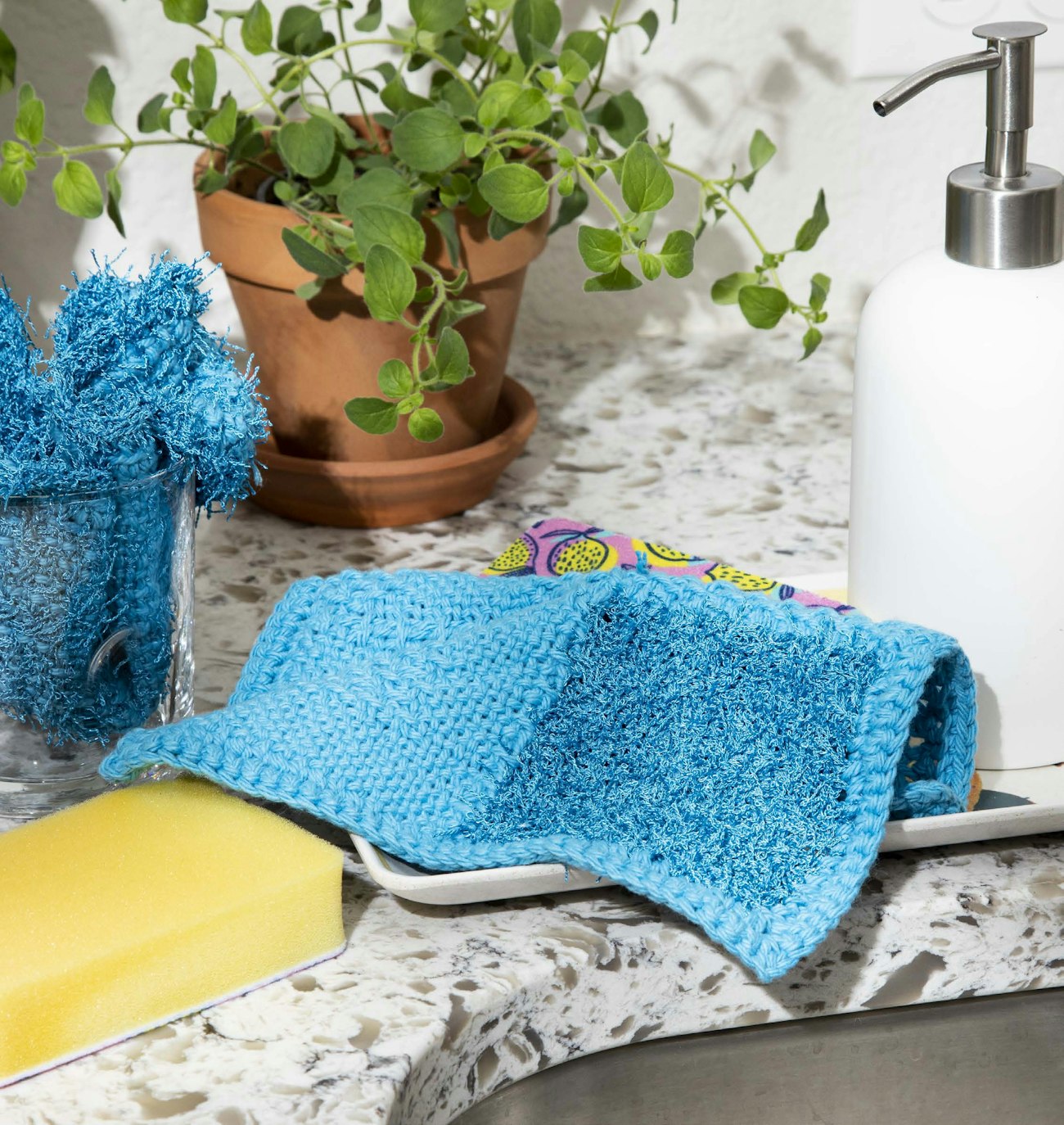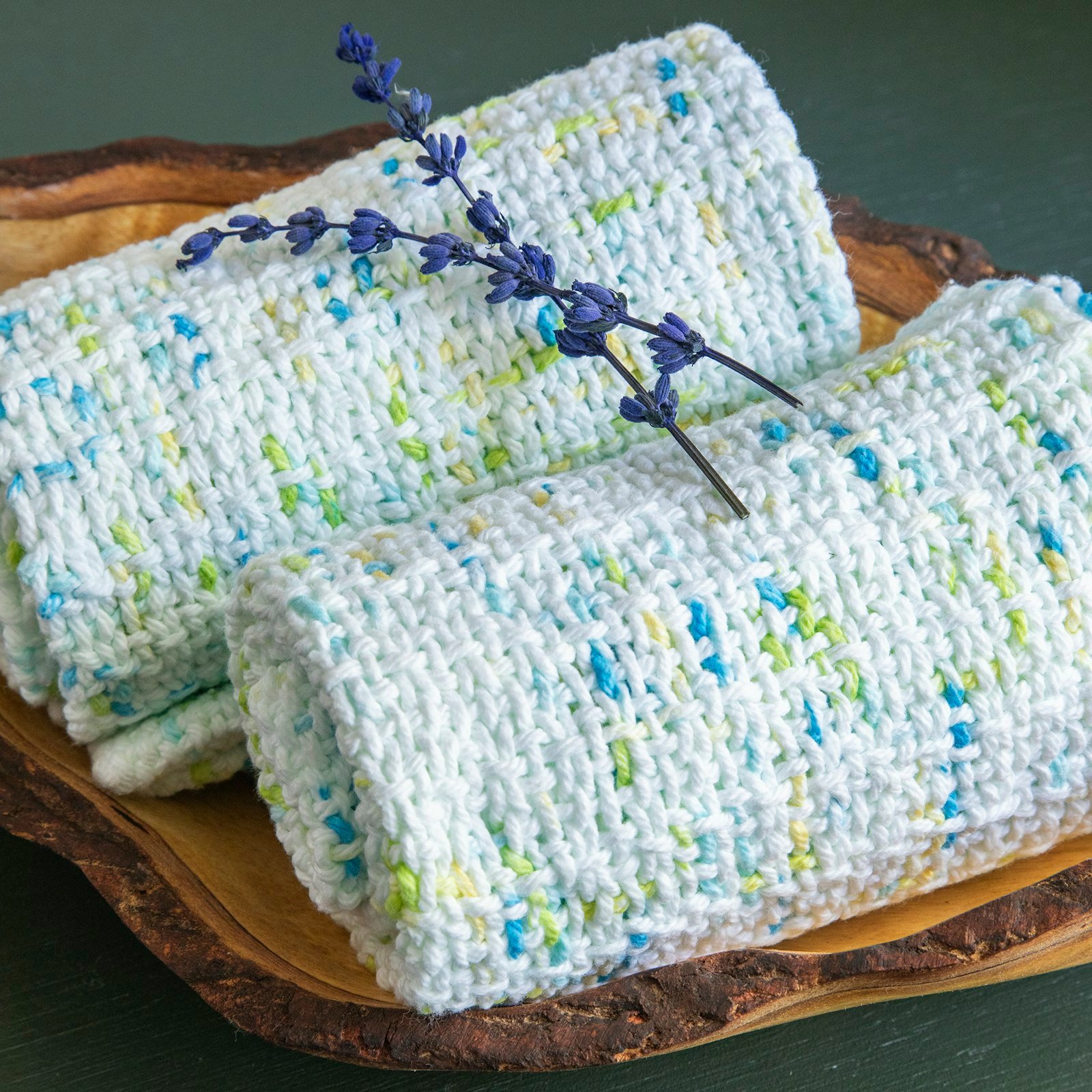Lately, I’ve been thinking about weaving towels. Not just any old towels, however: I want to weave tiny towels—or at least relatively smaller towels than typical. As I’ve been making a concerted effort to use fewer paper towels in my kitchen, I’ve realized a need for towels that I don’t feel guilty washing after one very messy, but relatively small, use.
I want a towel that I can use to wipe up those small spills that require the towel be washed right after. Think spilled raw egg, for example. Any towel used to wipe up that kind of mess has a one-way ticket to the hamper. While I could use a paper towel any time I spill eggs or other similarly yuck on my counter, why not just weave up some towels literally made for this kind of job?
My current plan for weaving tiny towels is to use Eloise Dehaan’s Confetti Towels from the Summer 2025 issue. I love the Confetti Towels: They’re beautiful, and thanks to some simple pick-up, they have extra scrubbing power. As written, the towels are fairly small, measuring just 12" by 25.5" after wet-finishing and hemming—but I want to make them even smaller, preferably around 6"–8" square-ish. This means I need to do some math!
Whether you scale them down or weave them as-is, the Confetti Towels are perfect for cleaning up in the kitchen.
Each towel as woven by Eloise starts out just over 15" wide in the reed and 33" long under tension on the loom. Shrinkage for width is just a hair more than 21 percent while in the length it’s around 15 percent. To figure out my ideal width in the heddle and woven length, I’ll subtract the rate of shrinkage from 100 and then divide my ideal size by that number before multiplying it by 100. Or, if you prefer: Ideal width/length ÷ (100 - rate of shrinkage)(100).
So, for a 6" wide finished towel, I’d start with the following two equations: 100 - 21 = 79, (6 ÷ 79)100 = 7.59. Rounded up to the nearest quarter inch will give me a 7.75" wide warp. Doing the same math for the other measurements tells me to weave the 6" towel to 10.25" (this includes a 3" hem) and then for an 8" square towel, I need it to be 10.25" wide and 12.5" long.
Adjusting the woven length means I also need to adjust the warp length. The original 66" warp length doesn’t divide nicely by either of my possible warp lengths. I would rather weave more towels than fewer, so I’m going to add length. For the 6" towels I’d need to add 6" to the warp (72" total) and for the 8" towel I’d add 9" (75" total). This would get me 7 and 6 towels, respectively.
I’m not quite done yet. I still need to make sure my new widths work with both my heddle and the pick-up sequence used to weave the towels. The project uses an 8-dent heddle, so the new possible widths will work perfectly within that sett. Looking at Eloise’s pick-up sequence, I notice I’ll need an even number of ends, which I’ll have, so I know I’m good to go. All that’s left is to get the yarn and get it on the loom so I can start weaving.
 This Handwash Only Washcloth Scrubby by Deborah Bagley would be a good option for a relatively small towel.
This Handwash Only Washcloth Scrubby by Deborah Bagley would be a good option for a relatively small towel.
Of course, after doing all the math I realized there’s an even easier way to get the tiny towels of my dreams: Weaving them on a pin loom. With a pin loom I can get a perfectly square, perfectly small towel—I can even add in pick-up to get a nice scrubby texture.
What’s a girl to do? Knowing me, I’ll probaby weave them both!
Happy Weaving!
Christina

